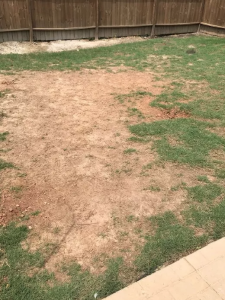Scenarios
The Art and Science of Landscaping
Jeff and Mindy both work from home so the place they live in is both their home and their workplace. After renting for a long time, Jeff and Mindy finally saved enough to move into their first dream house earlier this year. They have already spent a lot remodeling the inside of the house and are now looking for ways to make their yard look good and feel good.

Neither knows exactly how they want their future yard to look like but they both have some ideas about what they really want to see in their future yard. As the one who has been taking care of the yard since their move-in, Jeff wants something that is simple and easy to maintain. Mindy, on the other hand, wants to have a few flower beds here and there spreading throughout their front and backyard to attract butterflies and birds. She thinks walking around these small gardens will make them feel relaxed and peaceful after everyday’s busy work. Jeff is not completely against Mindy’s idea but that means a lot of what he considers as unnecessary extra yardwork for him year-round, which he doesn’t have the time, energy, and interest to do. His argument is that he would rather use the time saved from doing those extra work to take her to the nearby city park to relax. The city park is only about 8 minutes away from their house anyway. Mindy disagrees because she thinks those are two completely different things. Their son Tom, a first-year college student majoring in computer science, came back home last week for summer break. After listening to his parents trying to sell their landscaping ideas to each other almost every day on the dining table, Tom asked them if they had thought about automating some of the yard and garden maintenance work to ease Jeff’s workload and, at the same time, fulfill Mindy’s dream. Jeff and Mindy both showed interest and asked Tom to design a landscaping plan based on his idea. Tom developed one by keeping Mindy’s garden idea but added technology to take care of the landscape maintenance work that otherwise would be Jeff’s responsibility. Jeff and Mindy both like Tom’s plan but don’t know how to implement it. Mindy who manages the financial aspect of the family “organization” is concerned that the budget for Tom’s plan is going to burn a big hole in their pocket. Seeing himself not a digital native, Jeff is concerned that he will have difficulty keeping up with the maintenance of those technology-powered equipment. Now, they are stuck with three landscaping plans.
Leading an organization is more complicated than leading a household, but they do share some key commonalities. For example, they all provide services and products to meet the needs of their internal or external employees/customers. In this scenario, Jeff and Mindy can be seen as c-level executives in their family “organization” with Jeff overseeing the family’s operations and Mindy responsible for the family’s finance and the well-being of the family workforce. Tom, armed with the bells and whistles of technology, is the future leader. Their family “organization” is now facing the challenge that most organizations are faced with only at a smaller scale: Providing quality services and products to family employees and also customers, cultivating a culture of well-being within the family “organization”, offering resources and opportunities for the family “workforce” remain to be competitive globally, and contributing to social good. So, what they are doing is not just about landscaping their yard but to build a healthy and productive modern family “organization” – The art and science of landscaping.

